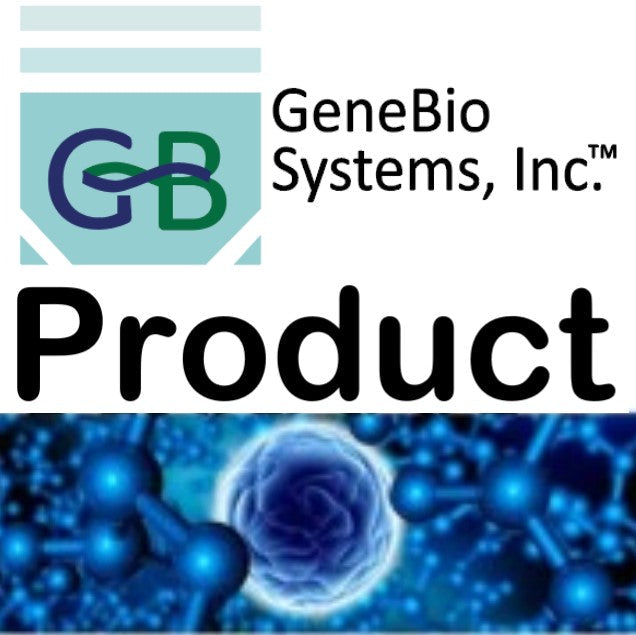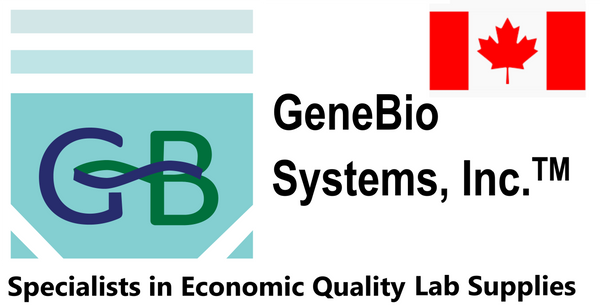Gene Bio Systems
Recombinant Rat Transforming growth factor beta-1(Tgfb1),partial
Recombinant Rat Transforming growth factor beta-1(Tgfb1),partial
SKU:CSB-EP023446RAe1
Couldn't load pickup availability
>Several Other Sizes Are Also Available. Please Inquire. Default Size: 200ug
Updated Date: Stock Protein updated on 20170405
Research areas: Signal Transduction
Target / Protein: Tgfb1
Biologically active: Not Tested
Expression system: E.coli
Species of origin: Rattus norvegicus (Rat)
Delivery time: 3-7 business days
Uniprot ID: P17246
AA Sequence: LSTCKTIDMELVKRKRIEAIRGQILSKLRLASPPSQGEVPPGPLPEAVLALYNSTRDRVAGESADPEPEPEADYYAKEVTRVLMVDRNNAIYDKTKDITHSIYMFFNTSDIREAVPEPPLLSRAELRLQRFKSTVEQHVELYQKYSNNSWRYLGNRLLTPTDTPEWLSFDVTGVVRQWLNQGDGIQGFRFSAHCSCDSKDNVLHVEINGISPKRRGDLGTIHDMNRPFLLLMATPLERAQHLHSSRHRR
Tag info: NO-tagged
Expression Region: 30-278aa
Protein length: Partial
MW: 28.5 kDa
Alternative Name(s):
Relevance: Multifunctional protein that controls proliferation, differentiation and other functions in many cell types. Many cells synthe>Several Other Sizes Are Also Available. Please Inquire. Default Size TGFB1 and have specific receptors for it. It positively and negatively regulates many other growth factors. It plays an important role in bone remodeling as it is a potent stimulator of osteoblastic bone formation, causing chemotaxis, proliferation and differentiation in committed osteoblasts. Stimulates sustained production of collagen through the activation of CREB3L1 by regulated intramembrane proteolysis (RIP). Can promote either T-helper 17 cells (Th17) or regulatory T-cells (Treg) lineage differentiation in a concentration-dependent manner. At high concentrations, leads to FOXP3-mediated suppression of RORC and down-regulation of IL-17 expression, favoring Treg cell development. At low concentrations in concert with IL-6 and IL-21, leads to expression of the IL-17 and IL-23 receptors, favoring differentiation to Th17 cells. Mediates SMAD2/3 activation by inducing its phosphorylation and subsequent translocation to the nucleus. Can induce epithelial-to-mesenchymal transition (EMT) and cell migration in various cell types
Reference: "The first stage of transforming growth factor beta1 activation is release of the large latent complex from the extracellular matrix of growth plate chondrocytes by matrix vesicle stromelysin-1 (MMP-3)." Maeda S., Dean D.D., Gomez R., Schwartz Z., Boyan B.D. Calcif. Tissue Int. 70:54-65(2002)
Purity: Greater than 90% as determined by SDS-PAGE.
Storage: The shelf life is related to many factors, storage state, buffer ingredients, storage temperature and the stability of the protein itself. Generally, the shelf life of liquid form is 6 months at -20℃/-80℃. The shelf life of lyophilized form is 12 months at -20℃/-80℃.
Notes: Repeated freezing and thawing is not recommended. Store working aliquots at 4℃ for up to one week.


